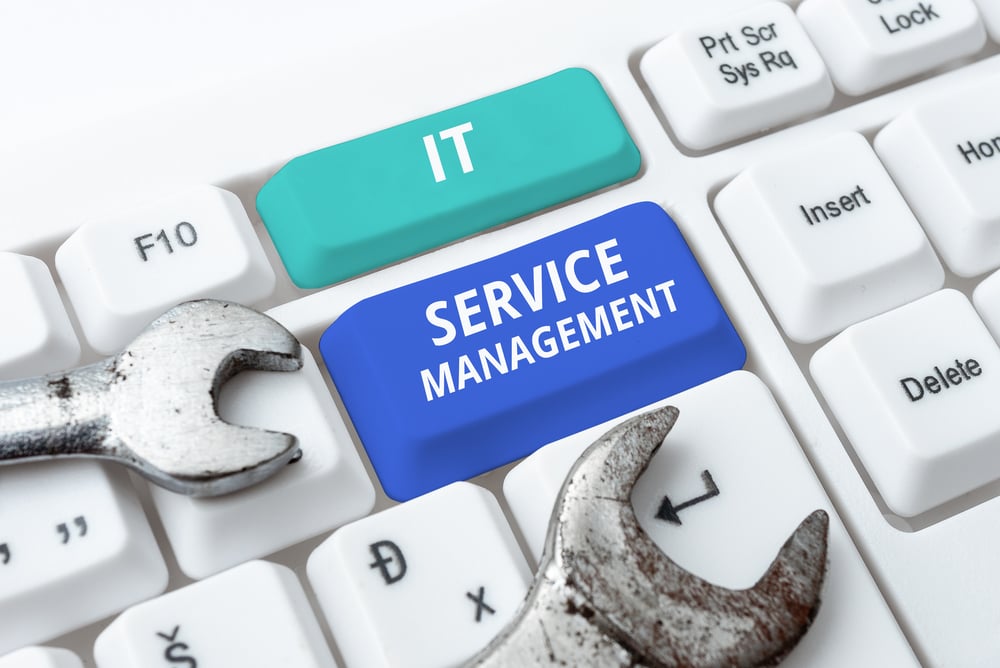The role of managed IT service providers and third-party vendors for business operations has led to an equally intense focus on managing associated risks. An organization’s failure to manage its vendor-related risks can expose it to legal, financial, and reputational damage. The need for effective third-party risk management strategies is now more critical than ever before.

Table of Contents
This article examines the role of managed IT service providers in managing these risks. Managed IT service providers offer a wide range of services such as data security, network infrastructure support, and software development among others. Their expertise in technology provides them with unique insights into the potential threats posed by different vendors within their client firms’ supply chains.
Managed IT service providers are thus well-positioned to help organizations identify, assess and mitigate vendor-related risks while maintaining operational efficiency. This article explores how these professionals can assist organizations in developing comprehensive third-party risk management programs and highlights some best practices in this regard.
The Importance Of Third-Party Risk Management
Vendor selection is a critical aspect of third-party risk management.
With the increasing reliance on external vendors to deliver goods and services, organizations need to ensure that their vendors can meet their needs without exposing them to unnecessary risks.
Risk assessment plays a crucial role in vendor selection as it enables companies to identify potential vulnerabilities early enough and take corrective action before they can cause significant damage.
A comprehensive risk assessment should evaluate various factors, such as the vendor’s reputation, financial stability, security posture, and compliance with relevant regulations.
Organizations can significantly reduce the likelihood of data breaches or regulatory penalties resulting from third-party incidents by prioritizing third-party risk management activities like vendor selection and risk assessments.
The Expertise Of Managed It Service Providers
How can organizations ensure that their third-party risk management program is effective and efficient?
One solution is collaborating with managed IT service providers (MSPs) with industry-specific knowledge and expertise.
MSPs offer a collaborative approach by working closely with the organization’s internal team to identify potential risks, assess current controls, and implement mitigation strategies.
They also bring unique insights into emerging threats and trends in the industry, enabling organizations to stay ahead of the curve when managing third-party risks.
By leveraging the expertise of MSPs, organizations can better manage their third-party relationships while enhancing security measures across their entire network infrastructure.
Identifying And Assessing Vendor-Related Risks
Vendor risk assessment is an essential aspect of third-party risk management that involves identifying and evaluating the potential risks associated with vendors.
To effectively manage vendor-related risks, it’s important to use risk evaluation techniques such as questionnaires, audits, site visits, and performance metrics analysis.
These techniques can help organizations determine whether their vendors meet contractual obligations and comply with relevant regulations.
In addition to assessing the vendor’s ability to deliver goods or services, evaluating their information security practices and data protection policies is crucial.
By conducting thorough assessments and evaluations of vendors’ risk profiles, managed IT service providers can help organizations mitigate potential threats and vulnerabilities in their supply chain.
Mitigating Risks With Managed It Services
As if the multitude of cybersecurity threats wasn’t enough for organizations to grapple with, there’s also the challenge of outsourcing IT.
Managed IT service providers have become increasingly relevant in mitigating risks associated with third-party partnerships.
The right provider can help organizations minimize their exposure to risk by offering comprehensive security solutions, including anti-virus software, firewalls, and intrusion detection systems.
In addition to these technical measures, managed service providers are often equipped with teams of security professionals who can provide ongoing support and training to ensure that employees remain vigilant against potential threats.
However, organizations need to conduct rigorous due diligence when selecting a managed service provider, as any deficiencies in their security posture could create an additional layer of risk rather than mitigate it.
Best Practices For Third-Party Risk Management Programs
Organizations must implement best practices in their risk management programs to effectively manage third-party risks.
Collaboration strategies should be established with vendors to ensure consistent communication and a shared understanding of expectations regarding security measures.
Additionally, conducting regular risk assessments using techniques such as questionnaires, audits or vulnerability scans can help identify potential vulnerabilities and assess the effectiveness of existing controls.
It is also important for organizations to establish clear policies and procedures for onboarding new vendors and terminating relationships with existing ones that do not meet security standards.
By following these best practices, companies can better protect themselves from costly data breaches and other security incidents associated with third-party providers.
Frequently Asked Questions
What Are Some Common Challenges Faced By Organizations When It Comes To Third-Party Risk Management?
Organizations face numerous challenges when it comes to third-party risk management. According to a recent survey, 59% of companies reported that they had experienced a data breach caused by one of their vendors or third-party partners. This highlights the critical need for effective vendor assessment and risk mitigation strategies in place.
One common challenge is limited visibility into third-party providers’ security practices, making it difficult to assess their level of risk accurately. Another issue is the lack of standardization among different industries regarding what constitutes acceptable cybersecurity practices. Additionally, organizations often struggle with identifying all of their third-party relationships, making it challenging to keep track of who has access to sensitive information.
Effective third-party risk management requires implementing comprehensive policies and procedures that align with industry standards and regulations while ensuring constant monitoring and evaluation to proactively identify potential risks.
How Do Managed It Service Providers Stay Up-To-Date With Changing Regulations And Industry Standards Related To Third-Party Risk Management?
To effectively manage third-party risk, it is crucial for managed IT service providers to stay up-to-date with changing regulations and industry standards.
This requires ongoing training resources as well as strategic partnerships within the industry. Providers must continuously educate themselves on emerging risks and regulatory compliance requirements in order to offer their clients the most effective support possible.
Collaborating with other organizations and experts can provide valuable insights into best practices and new approaches for managing third-party risks. Ultimately, staying informed about regulation changes and establishing strong industry partnerships allows managed IT service providers to better serve their clients by offering comprehensive solutions that meet evolving needs while mitigating potential risks.
Can Managed It Service Providers Help With The Development Of A Comprehensive Vendor Management Policy?
As a risk management IT analyst, assessing vendor risks and developing effective mitigation strategies is essential.
In this regard, managed IT service providers can play a crucial role in helping organizations create comprehensive vendor management policies.
By keeping up-to-date with changing regulations and industry standards related to third-party risk management, these providers can provide valuable insights into best practices for developing robust vendor assessment frameworks that identify potential threats and vulnerabilities.
Through their expertise, they can help organizations prioritize areas of focus based on the level of risk associated with each vendor relationship.
Ultimately, companies can enhance their ability to manage third-party risks effectively and ensure business continuity by partnering with managed IT service providers.
What Are Some Key Considerations When Selecting A Managed It Service Provider To Help With Third-Party Risk Management?
When selecting a managed IT service provider to assist in third-party risk management, there are several key considerations that organizations must take into account.
One important factor is cost considerations, as outsourcing these services can be expensive and may not always provide the expected return on investment.
Additionally, integration challenges should also be taken into consideration when choosing a vendor. It is crucial for organizations to ensure that their chosen provider has experience integrating with existing systems and processes to avoid any disruptions or delays in operations.
Overall, careful selection of a managed IT service provider can help organizations effectively manage third-party risks while minimizing costs and avoiding potential integration issues.
How Can Organizations Measure The Effectiveness Of Their Third-Party Risk Management Program, And What Role Do Managed It Service Providers Play In This Process?
Organizations are constantly seeking ways to improve their third-party risk management programs, and one possible solution is through the collaboration and integration with managed IT service providers.
However, measuring the effectiveness of such a program can be challenging, especially when dealing with multiple third-party vendors. As an IT risk management analyst, it’s important to identify key performance indicators (KPIs) that align with organizational objectives and track progress over time.
Managed IT service providers play a vital role in this process by providing insights into vendor security posture, conducting vulnerability assessments, and ensuring compliance with industry standards.
Organizations can achieve greater visibility into their third-party ecosystem and mitigate risks more effectively by working together.
Conclusion
Third-party risk management is essential to any organization’s overall security posture. However, it can be a complex and challenging task to navigate. Managed IT service providers play a crucial role in helping organizations manage third-party risks by providing expertise, experience, and resources.
One critical challenge that organizations face when managing third-party risks is keeping up with changing regulations and industry standards. This requires continuous monitoring and updating of policies and procedures to ensure compliance with all relevant laws and regulations.
Managed IT service providers stay abreast of these changes through ongoing training, certification programs, and regular communication with regulatory agencies.
Another significant benefit of using managed IT service providers for third-party risk management is their ability to help develop a comprehensive vendor management policy. This includes identifying the right vendors, establishing clear expectations regarding data protection measures, ensuring contractual obligations are met, conducting regular audits/assessments on vendors’ security practices, and maintaining proper documentation to support compliance efforts.
When selecting a managed IT service provider for third-party risk management services, key considerations include assessing their level of expertise and experience within your specific industry sector; evaluating the quality of their reporting mechanisms; reviewing their track record in delivering successful outcomes; considering pricing models that align with budgetary constraints or existing contracts; verifying references from current clients who have used similar services.
In conclusion, effective third-party risk management requires collaboration between internal teams responsible for procurement/vendor relationships as well as external partners such as managed IT service providers. By working together towards common goals centered around regulatory compliance and data protection best practices, organizations can minimize potential threats posed by third-party entities while optimizing operational efficiencies.
As Sun Tzu famously said in The Art of War: ‘The supreme art of war is to subdue the enemy without fighting.’ Similarly, in today’s ever-evolving threat landscape characterized by sophisticated cyberattacks aimed at exploiting vulnerabilities across supply chains- partnering with capable managed IT service providers could prove instrumental in securing victory against adversaries.



